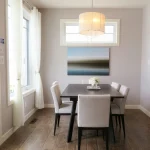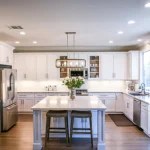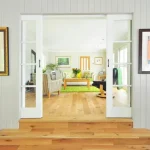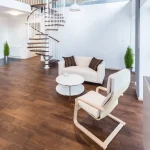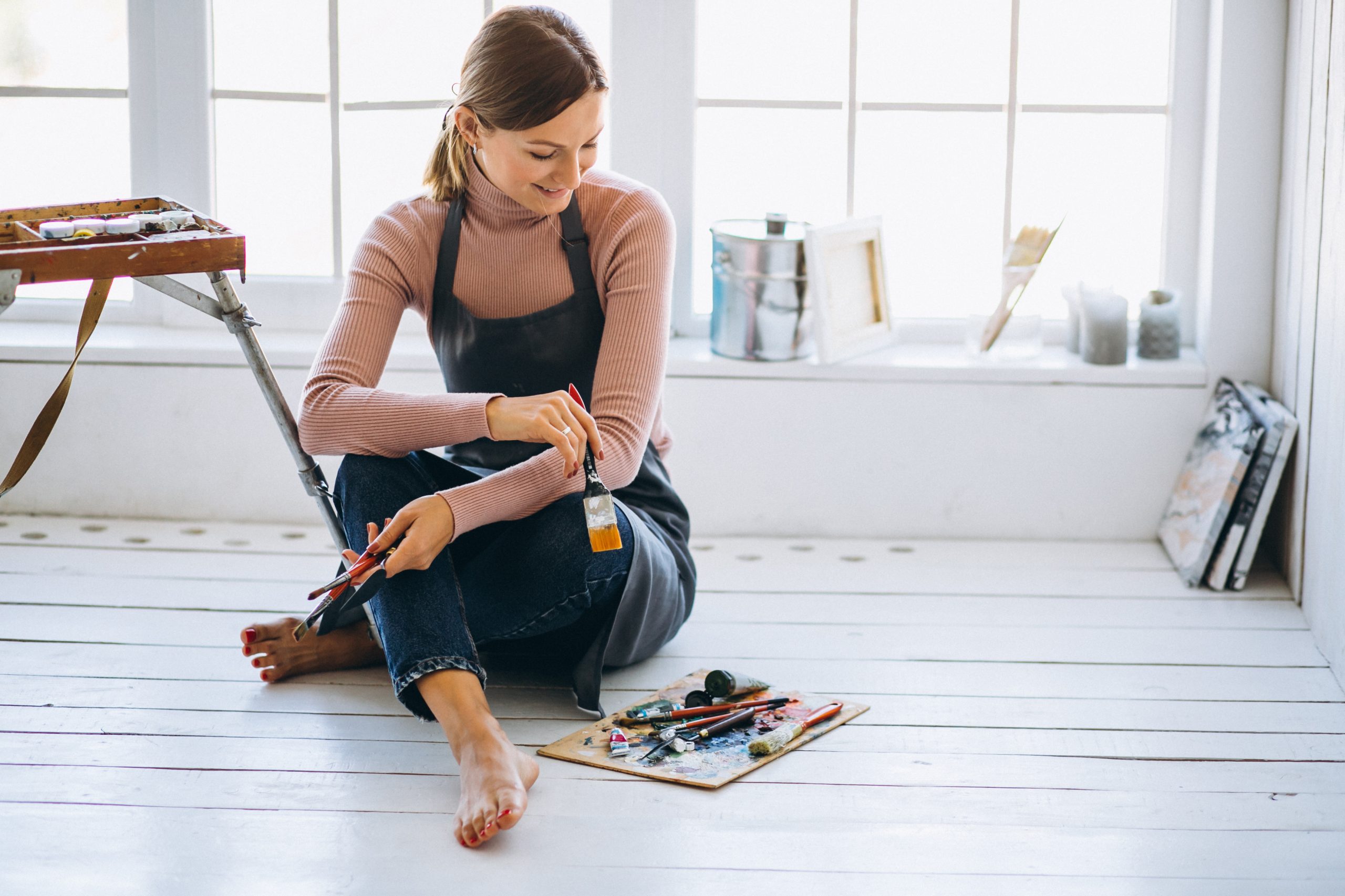
What to Do When Hardwood Floors Start to Buckle
Hardwood floors add warmth and elegance to any home, but they can also be prone to problems like buckling. Buckling occurs when wood planks lift, warp, or separate from the subfloor, creating an uneven surface. It’s a common issue in areas with high humidity or water damage, but with the right steps, it can be addressed effectively. In this guide, we’ll explain why hardwood floors buckle, how to fix the problem, and what you can do to prevent it, whether you’re in Norwalk, Tarrytown, Stamford, White Plains, or nearby areas.
What Causes Hardwood Floors to Buckle?
Understanding why hardwood floors buckle is the first step in solving the problem. Here are the most common causes:
1. Moisture and Humidity
- Hardwood is a natural material that expands and contracts with changes in moisture levels. High humidity or water exposure causes the wood to absorb moisture, swell, and eventually buckle.
- In cities like Norwalk and Stamford, where humidity can be a concern during summer months, hardwood floors may be more susceptible to buckling.
2. Water Damage
- Leaks, spills, or flooding can lead to severe water damage that causes hardwood planks to buckle. This can occur from plumbing leaks, overflowing sinks, or even pet accidents that aren’t cleaned up promptly.
- Homes in areas like Tarrytown or White Plains that have experienced recent flooding or heavy rain are more prone to buckling issues.
3. Improper Installation
- If hardwood floors aren’t installed correctly, they may not have enough room to expand and contract. This can lead to buckling when the wood expands.
- Lack of an adequate moisture barrier during installation can also cause moisture to seep into the wood, increasing the risk of buckling.
4. Lack of Acclimation
- Hardwood needs to acclimate to the environment before installation. Failing to allow the wood to adjust to the home’s humidity and temperature can result in buckling once the floors settle.
- In homes throughout Stamford or Norwalk, acclimation is crucial due to varying weather conditions.
What to Do When Hardwood Floors Start to Buckle
If you notice your hardwood floors beginning to buckle, here’s how to address the problem effectively:
1. Identify and Stop the Source of Moisture
- The first step in addressing buckling is to find and eliminate the source of moisture. Check for leaks, spills, or any other water sources that could be causing the problem.
- For minor spills or leaks, dry the area thoroughly with towels and fans. For larger water issues, such as flooding or plumbing leaks, consider using a dehumidifier to reduce moisture levels quickly.
2. Dry the Affected Area
- Drying the area thoroughly is essential to prevent further buckling. Use fans, a dehumidifier, or even an HVAC system to help dry the area.
- In more severe cases, you may need to lift the floorboards to allow air to circulate underneath, especially in homes with crawl spaces or basements, as found in many homes around Tarrytown or White Plains.
3. Remove the Buckled Planks
- If the buckling is significant, you may need to remove the damaged planks. Use a pry bar to carefully lift the boards, taking care not to damage surrounding flooring.
- Once the boards are removed, allow the subfloor and surrounding areas to dry completely before installing new planks.
4. Inspect and Repair the Subfloor
- Buckling can sometimes cause damage to the subfloor. Inspect the subfloor for signs of mold, rot, or water damage, and repair or replace any affected areas.
- Ensure that the subfloor is properly dried and moisture levels are within acceptable limits before reinstalling hardwood planks.
5. Reinstall or Replace Damaged Planks
- Once the area is dry and the subfloor is secure, you can reinstall the removed planks or replace them with new ones. Be sure to allow the replacement planks to acclimate to the room’s conditions before installation.
- For best results, consider hiring a professional flooring contractor, especially in cities like Norwalk or Stamford, where humidity can be unpredictable.
6. Sand and Refinish the Floor
- After the repairs, sanding and refinishing may be necessary to restore the floor’s appearance and ensure an even surface. This process will also help blend the repaired area with the rest of the floor.
- Professional refinishing can help restore your hardwood’s original beauty and protect it from future damage.
How to Prevent Hardwood Floors from Buckling
Prevention is key to maintaining the beauty and integrity of your hardwood floors. Here’s how you can minimize the risk of buckling:
1. Maintain Proper Humidity Levels
- Use a dehumidifier during humid months and a humidifier during dry months to maintain stable humidity levels in your home. Ideal indoor humidity for hardwood floors ranges between 30-50%.
- Homes in areas like Norwalk or Tarrytown, which experience significant humidity changes throughout the year, can benefit from consistent humidity control.
2. Clean Up Spills Immediately
- Wipe up spills as soon as they occur to prevent moisture from seeping into the wood. Use a damp cloth followed by a dry one to ensure the area is dry.
- For larger spills or leaks, use a wet/dry vacuum and fans to dry the area as quickly as possible.
3. Ensure Proper Installation
- Proper installation with the right moisture barrier is essential for preventing buckling. Work with experienced professionals who understand how to install hardwood floors in areas like Stamford or White Plains, where humidity can be a factor.
- Make sure that hardwood planks are acclimated for at least 3-7 days before installation to reduce the risk of buckling after they settle.
4. Use Area Rugs in High-Risk Areas
- Place area rugs in high-risk areas, such as near sinks, dishwashers, and entryways, to protect the floor from moisture and spills.
- Non-slip pads beneath rugs can also help prevent moisture from getting trapped, reducing the risk of damage.
5. Perform Regular Inspections
- Periodically inspect your hardwood floors for signs of moisture or damage. Look for warping, gaps, or buckling, and address any issues promptly to prevent more extensive damage.
Why Choose All Hardwoods & Carpet?
At All Hardwoods & Carpet, we have extensive experience dealing with hardwood floor repairs, including buckling issues. Whether you’re in Norwalk, Tarrytown, Stamford, or White Plains, our team offers professional solutions to restore and protect your hardwood floors. We provide expert installation, refinishing, and repair services to ensure your floors look and perform their best.
Get in Touch
If you’re dealing with buckling hardwood floors, contact us today for a free consultation!
- Norwalk Location: Call us at (203) 913-4209
- Tarrytown Location: Call us at (914) 415-5582
- Website: Visit hardwoodfloorsllc.com for more information or to schedule a service.
Address:
Norwalk Location: 123 Main St, Norwalk, CT
Tarrytown Location: 456 Broadway Ave, Tarrytown, NY


